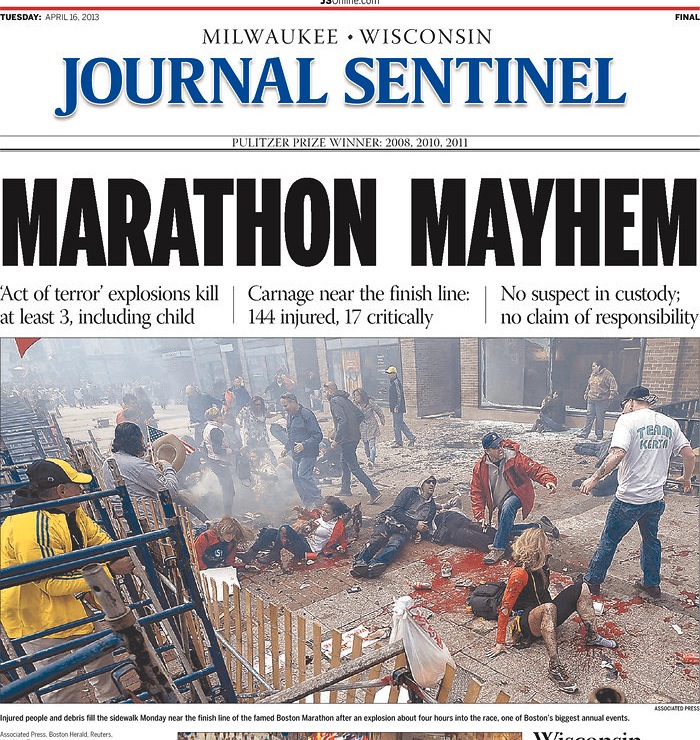A New York Tabloid Tried to Clean Up Its Photo of the Marathon
A New York tabloid is facing criticism for doctoring its front page image of the Boston Marathon attack to make it less gory. The New York Daily News ran an image taken by John Tlumacki of The Boston Globe but edited the wound out of one woman’s leg, reports Capital New York’s Joe Pompeo. Take a look:
Editing an existing photo to make it more palatable violates the good practices generally agreed upon by journalists. Even Daily News staffer, Pompeo reports, were pretty annoyed with their paper’s decision, which many of them learned about from a blog post describing the photo manipulation. “If you can’t stomach the gore, don’t run the photo. Period,” wrote Charles Apple, the author of the blog post and an editor at the Orange County Register.
In some ways, it’s an understandable impulse to shield readers from some of the more gruesome images that came out of Boston Monday, at least on the front page. And many of the nation’s newspapers found dramatic images that communicated some of the drama without the appearance of blood, as you can see in our roundup. Other newspapers that did put similar images on the front page, like the Milwaukee Journal Sentinel, faced a bit of grumbling from readers on Facebook who didn’t want to be confronted with the violence.
The Boston Globe ran a letter from a reader, Barbara Marriott of Waltham, who expressed anger at the photo the Globe chose to run above the fold on its Tuesday edition. (That photo showed no visible injuries on the scale of the one depicted in the image above.) Marriott wrote:
I am outraged at your choice to show a photo of a bloodied street with bleeding victims covering the top fold of the paper Tuesday. Yes, it was an act of terror. Yes, it was terrible for all involved to live through. But do not continue to reterrorize us by showing these images where they cannot be avoided.
That’s not to overstate the scale of complaint with newspapers who ran images of blood. Most journalists, and we’d guess many readers, believed that those images reflected an unsensationalized reality on the ground in Boston and gave readers a more visceral understanding. Nor were they even among the most gruesome coming out of the scene. Even so, when pockets of readers disagree about what they want from the paper, it’s a tough decision for editors.
This debate aside, you’ll have trouble finding people who’d advocate for doctoring photos to make them more pleasant for readers, aside from the Daily News itself of course. A Daily News spokesman tells Pompeo:
“The Daily News edited that photo out of sensitivity to the victims, the families and the survivors,” he said. “There were far more gory photos that the paper chose not to run, and frankly I think the rest of the media should have been as sensitive as the Daily News.”
That rings a bit hollow given that even when edited, the Daily News’s front page isn’t exactly sensitively leaving out all traces of blood and violence. Whether or not other newspapers ought to have been as “sensitive” as the Daily News, the Daily News probably should have been as sensitive as the rest of the news media to the expectations of photojournalism.





